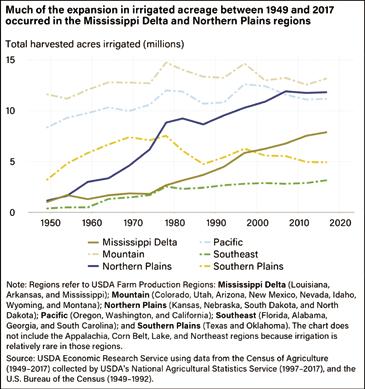
8 minute read
Ag Insight
BY JIM ERICKSON
Tariffs on food products boost consumer prices
Advertisement
Tariffs are a type of tax that governments impose on imports for a variety of reasons, including a way to raise revenue and to protect domestic industries. This latter reason – protection – can come at a cost to domestic consumers in the form of higher prices. The resulting higher prices may stimulate or impede changes in the supply of goods, resulting in impacts on the global balance of trade called “distortions.” A tariff may be a fixed charge per unit of product imported (specific tariff), a fixed percentage of value (ad valorem tariff), or a combination of both. Tariffs can also be used in combination with a quota, becoming a tariff-rate quota. Tariff-rate quotas provide some market access, but their often-high over-quota rates limit how much trade can occur. Countries apply tariffs to protect domestic industries against price competition from imports. Tariffs are higher on agricultural products than they are on non-agricultural goods in more than 90% of countries. That is because in some regions, agricultural products are often deemed “sensitive,” meaning they are important for national security reasons. Furthermore, tariffs on agriculture tend to be much higher than those on non-agricultural products. For example, South Korea’s tariff on agricultural products averages 79% compared with 4% for non-agricultural imports. A USDA, Economic Research Service (ERS) study addressed the question of what would happen if all tariffs on agricultural trade were removed. The results of that study indicated that global trade and consumer well-being would improve most with the complete removal of tariffs. According to the study, a removal of agricultural tariffs would spark an increase in consumer well-being – essentially the equivalent impact of income changes – of $56.3 billion.
Irrigation challenges likely to increase
Irrigation is a vital part of the U.S. agricultural economy. In 2017, irrigated farms produced more than 54% of the total value of crop sales. Irrigation allows for agricultural production in arid regions where precipitation is insufficient to meet plant water requirements. In more humid regions with variable growing-season rainfall, applied irrigation water supplements available soil moisture and provides a critical buffer against periodic drought. Among the key trends in the growth of irrigation usage are these:
• Irrigated acreage has expanded rapidly since the passage of the Federal Reclamation Act of 1902. Nationwide, irrigated acreage grew from less than 3 million acres in 1890 to more than 58 million acres in 2017.
• Between 1949 and 2017, the share of U.S. irrigated cropland within the Mountain and Pacific regions decreased from 77% to 44%, while the share of irrigated cropland in the Mississippi
Delta and Northern Plains regions increased from 8% to 34%.
• In the Pacific, Mountain, and Northern and
Southern Plains regions, the share of irrigated acres using pressurized systems rose from 37% in 1984 to 72% in 2018, with innovations focused on improved precision of applied water, reduced pressurization requirements and system automation.
However, increasing competition for water supplies, declining groundwater reserves, and shifts in climatic conditions and hydrologic flows are taxing the ability of regional water systems to meet irrigation needs. Projected increases in the frequency and severity of droughts have important implications for future agricultural water demand and supply. The resiliency of irrigated agriculture will depend on how farmers, and the institutions that influence water supply and use, adapt to increasing water scarcity. Irrigation is a vital part of the U.S. agricultural economy. In 2017, irrigated farms produced more than 54% of the total value of crop sales. Irrigation allows for agricultural production in arid regions where precipitation is insufficient to meet plant water requirements. In more humid regions with variable growing-season rainfall, applied irrigation water supplements available soil moisture and provides a critical buffer against periodic drought.



A recent study by USDA’s Economic Research Service illustrated the importance of inspecting imported food imports to prevent items contaminated with pathogens or toxins from entering the nation’s food supply. Such contamination can cause a variety of illnesses with symptoms ranging from nausea, vomiting, and diarrhea to more serious outcomes, such as renal failure, paralysis, and even death. Further emphasizing the importance of food inspection activities is the fact that the amount of imported food for U.S. consumption has grown nearly
80% from 2002 to more than 65 million tons in 2019, according to USDA’s. Among the key realities of the food import and inspection picture are these, according to USDA’s Global Agricultural Trade System:
• The U.S. Food and Drug Administration (FDA) estimates that annual consumption of foreign foods in the United States accounts for approximately 94% of seafood, 55% of fresh fruit, and 32% of fresh vegetables, as measured by volume of total food consumed.
• As part of its U.S. food safety oversight, FDA inspects imported foods at the border or port of entry. FDA physically examines approximately 1 to 2% of imported foods, with the exception of meat, poultry, and egg products, which are inspected by USDA. Shipments are subject to refusal into the United States if an inspector identifies an adulteration such as poisonous ingredients, disease-causing bacteria and viruses, unsafe color additives, pesticide residues, or apparent filth.
Shipments may also be refused for misbranding violations, which includes false or misleading ingredients labels, origin/manufacturer information, or quality of ingredients concerns.
• This study found that more than 22,000 pathogen and toxin violations were identified from 110 countries during 2002–19. Over the study period, India had the most pathogen-related violations with 5,115 refusals. This totaled 22.9% of overall import refusals for pathogen/toxin violations. Mexico had the second-most food import refusals with 3,338 (14.9 %), followed by
Vietnam with 1,929 (8.6%), Indonesia with 1,736 (7.8%), and France with 971 (4.3%).
Ag productivity growth slows
Increasing agricultural productivity is key to ensuring an abundant and affordable food supply for a growing global population while still conserving limited environmental resources such as land. A main driver of productivity growth is the development, adoption, and diffusion of new agricultural technologies and management practices. With technological progress and innovation, not only have agricultural yields increased, but opportunities to better manage the land, labor, and capital (inputs) needed for production and reduce the environ-
12 Cooperative Farming News
mental impact of production also have emerged. The benefits of new agricultural technologies, practices, and knowledge have been widespread across farms of different sizes, income levels, and agro-ecological environments. In recent years, however, growth in agricultural productivity has slowed, meaning the relative rate of output to input growth has narrowed. An update to the USDA, Economic Research Service (ERS) International Agricultural Productivity data product links deceleration in the growth of agricultural output with a recent slowdown in agricultural productivity. From 2011–19, the volume of world agricultural output was 6% below what it would have been if the growth rate of the previous decade had been maintained and compounded over time.
The U.S. Department of Agriculture’s (USDA) National Institute of Food and Agriculture (NIFA) recently announced an investment of nearly $25 million for 50 grants supporting Farm and Ranch Stress Assistance Network (FRSAN) State Department of Agriculture (SDA) projects. “NIFA’s Farm and Ranch Stress Assistance Network connects farmers, ranchers, and others in agriculture-related occupations to stress assistance programs,” said NIFA Director Dr. Carrie Castille. “Creating and expanding a network to assist farmers and ranchers in times of stress can increase behavioral health awareness, literacy, and positive outcomes for agricultural producers, workers and their families.” Funded projects must initiate, expand, or sustain programs that provide professional agricultural behavioral health counseling and referral for other forms of assistance as necessary through farm telephone helplines and websites; training programs and workshops; support groups; and outreach services and activities. One of the grants has gone to the Alabama Department of Agriculture and Industries in Montgomery.
Ag Trade Education Council formed
Agriculture leaders from across major food and ag associations have announced the formation of the Agriculture Trade Education Council (ATEC), a 501 c (3)
non-profit that will be a resource for education on the value of agricultural trade policies, practices, and structures.
The ATEC is chaired by ag leaders with decades of experience educating farmers, policymakers and businesses about how the international trading system works. The ATEC will facilitate education on trade policy on a variety of topics in an effort to grow support for and engagement in a rules-based trading system.
Rural broadband expansion announced
U.S. Department of Agriculture (USDA) recently announced a significant expansion of access to high-speed internet, health care and educational services for millions of rural Americans nationwide. The announcement is part of President Biden’s Build Back Better Agenda by prioritizing economic growth in rural America and investing in the backbone of our country – the middle class. “For too long, the ‘digital divide’ has left too many people living in rural communities behind – unable to compete in the global economy and unable to access the services and resources that all Americans need,” said USDA Secretary Tom Vilsack.
“The new actions will go a long way toward ensuring that people who live or work in rural areas are able to tap into the benefits of broadband, including access to specialized health care, educational opportunities and the global marketplace. Rural people, businesses and communities must have affordable, reliable, high-speed internet so they can fully participate in modern society and the modern economy,” Vilsack emphasized.



Cash back. Every member. Every year.


It’s what we do.
Together we grow.
alabama farm credit.com









